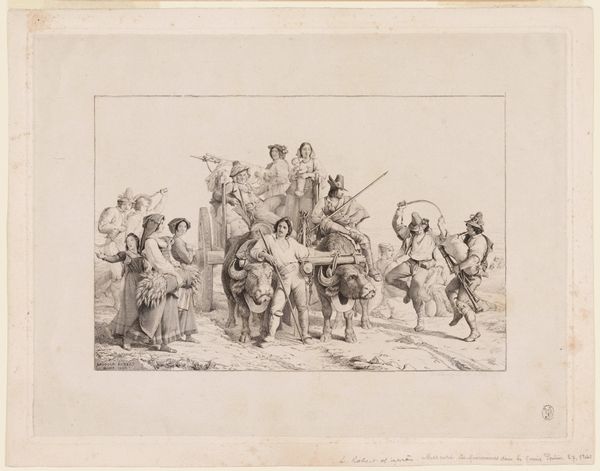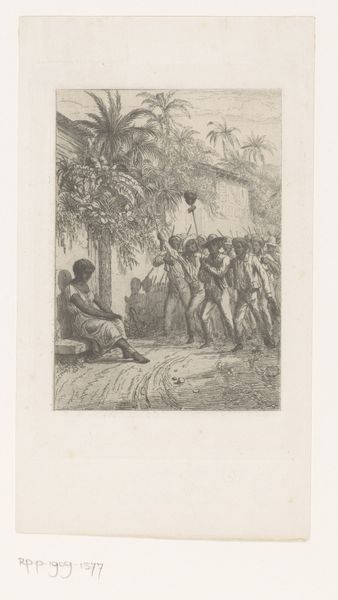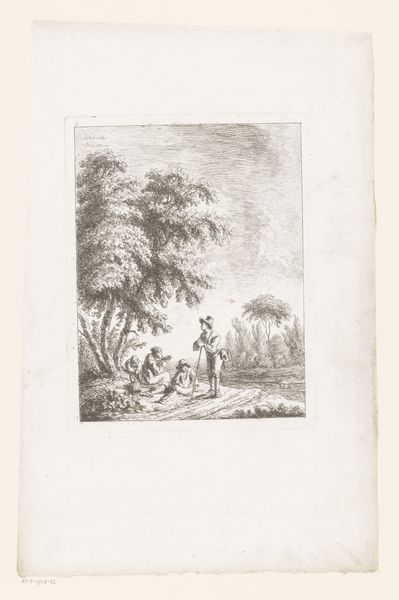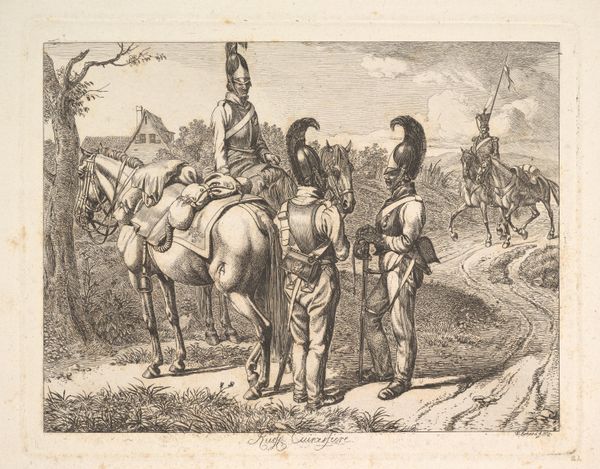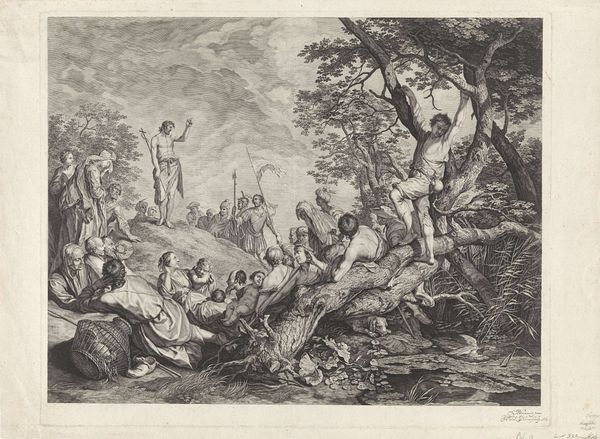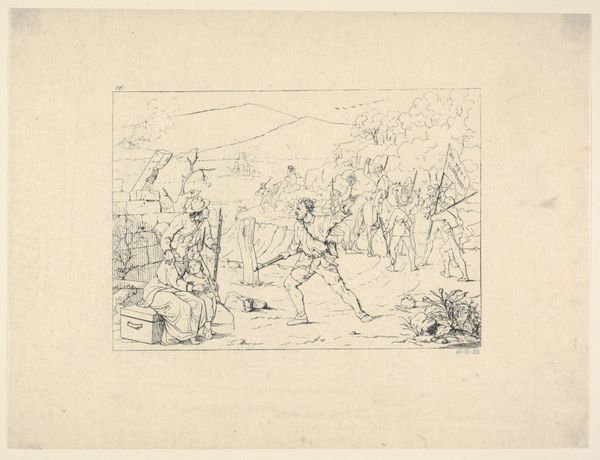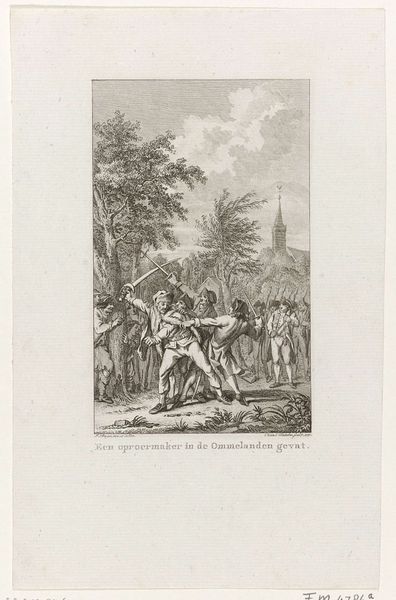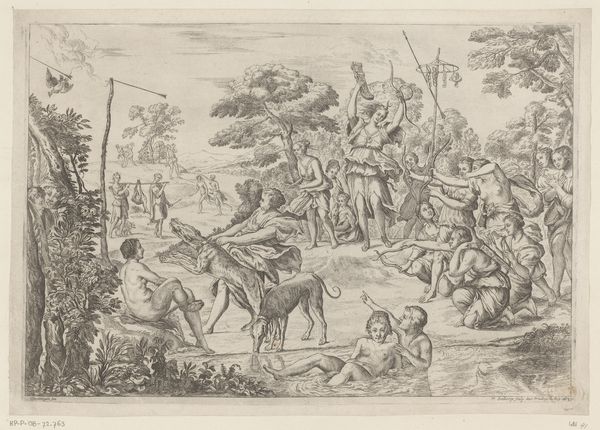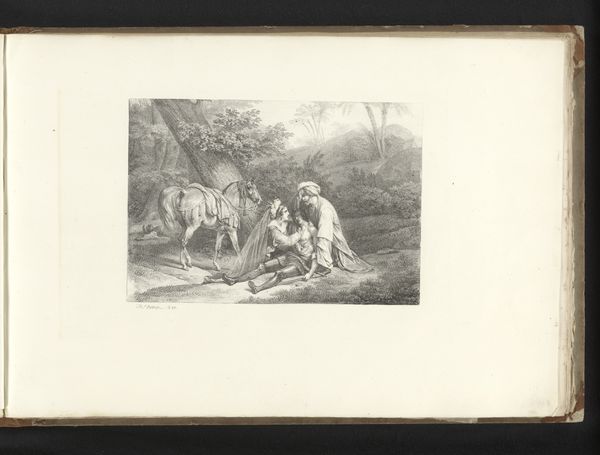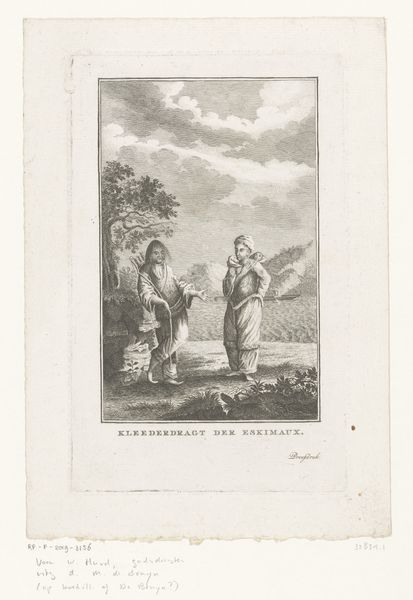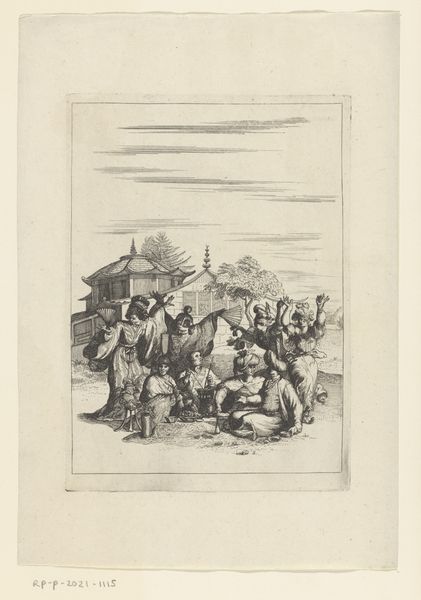
print, engraving
#
narrative-art
# print
#
figuration
#
romanticism
#
line
#
history-painting
#
engraving
Dimensions: height 121 mm, width 69 mm
Copyright: Rijks Museum: Open Domain
Curator: This print by Daniel Nikolaus Chodowiecki, made in 1796, is titled "Lovelace wordt gedood in een duel," or "Lovelace killed in a duel." Editor: It’s stark, isn't it? A body sprawled on the ground, the victor almost nonchalant. It’s a raw depiction of a violent, socially-sanctioned act, stripped down to its essential elements. Curator: Precisely. It illustrates a scene from Samuel Richardson’s novel *Clarissa*, positioning the duel as a clash of ideologies as much as physical violence, where gender roles and social standing fueled the drama and ultimately Lovelace's demise. It acts almost like an early form of reproductive media illustrating this tragic and controversial event to the masses. Editor: And how the act of engraving lends itself to this! Look at the intense concentration of line creating the dark shadows, then thinned out, scratched away in the sky and landscape, almost economical yet powerfully dramatic! Curator: The medium itself plays a significant role here, doesn't it? Engraving, as a reproducible medium, allowed for a wider dissemination of this narrative and of sociopolitical commentary at the time. The piece underscores the performative aspects of honor and masculinity intertwined in these duels and their relationship to print culture and circulating opinions. Editor: Absolutely. And the materials—the metal plate, the acid—dictate the level of detail and control. I find myself pondering the labor invested and how that directly reflects in the finished image. Curator: The romantic elements here seem subtle at first, yet it is precisely through the lines and drama that the piece manages to communicate emotional intensity; the implications resonate beyond this single act of violence. Considering how Chodowiecki uses social narratives through this particular lens provides fascinating ground for reflection on contemporary conversations about agency, power, and ethics. Editor: Looking at the materials and the production techniques really helps you see beyond the narrative of a romantic painting and recognize what a striking visual piece it is. It reminds us that this seemingly simple print is as rich and layered as a painting can be. Curator: Agreed. Thinking about this piece in light of its context certainly gives you a better understanding of gender and class during that time. Editor: It shows how materials dictate the message, I think, just as much as the choices of an artist.
Comments
No comments
Be the first to comment and join the conversation on the ultimate creative platform.
